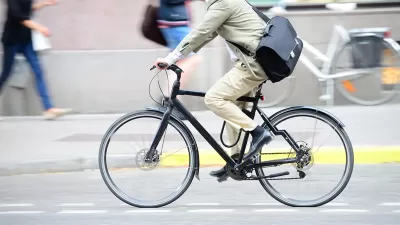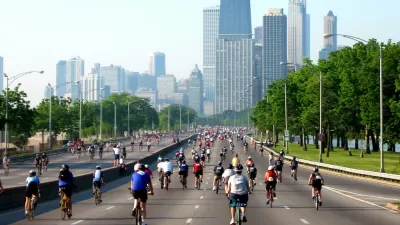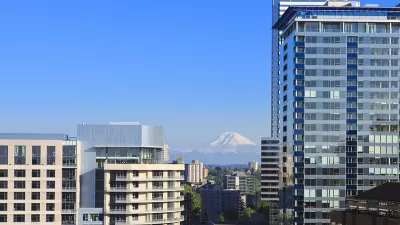Many U.S. cities are seeing an increase in bicycle commuters, according to a U.S. Census Bureau report released last week. Of all commute modes, biking increased the most from 2000 to 2012. Walking, however, held steady.

"Nationwide, the number of people who traveled to work by bike increased roughly 60 percent over the last decade, from about 488,000 in 2000 to about 786,000 during the 2008-2012 period. This is the largest percentage increase of all commuting modes tracked by the 2000 Census and the 2008-2012 American Community Survey," according to a press release announcing the United States Census Bureau's new report, titled "Modes Less Traveled—Bicycling and Walking to Work in the United States: 2008–2012."
Moreover, "[while] bicyclists still account for just 0.6 percent of all commuters, some of the nation's largest cities have more than doubled their rates since 2000. Portland, Ore., had the highest bicycle-commuting rate at 6.1 percent, up from 1.8 percent in 2000. In Minneapolis, the rate increased from 1.9 percent to 4.1 percent."
The results for walking, however, held steady: "After steadily decreasing since 1980, the percent of people who walk to work has stabilized since 2000. In 1980, 5.6 percent of workers walked to work, and that rate declined to 2.9 percent by 2000. However, in the 2008-2012 period, the rate of walkers remained statistically unchanged from 2000."
On the same day as the study, the Census also released a new commuting edition of the interactive map Census Explorer. Planetizen blogger Michael Lewyn already crunched that data about average commute times in cities and suburbs around the country.
Michael Stenzel has also analyzed some of the data in the report, especially with regard to the growing rate of walking and biking to work in Chicago: "In Chicago in 2000, 5.7% of workers walked to work, but by 2012, the percent had increased to 6.4%," and "in 2000, only half a percent of Chicagoans rode their bikes to work, but by 2012, it was 1.3%."
FULL STORY: Biking to Work Increases 60 Percent Over Last Decade, Census Bureau Reports

Trump Administration Could Effectively End Housing Voucher Program
Federal officials are eyeing major cuts to the Section 8 program that helps millions of low-income households pay rent.

Planetizen Federal Action Tracker
A weekly monitor of how Trump’s orders and actions are impacting planners and planning in America.

Ken Jennings Launches Transit Web Series
The Jeopardy champ wants you to ride public transit.

Rebuilding Smarter: How LA County Is Guiding Fire-Ravaged Communities Toward Resilience
Los Angeles County is leading a coordinated effort to help fire-impacted communities rebuild with resilience by providing recovery resources, promoting fire-wise design, and aligning reconstruction with broader sustainability and climate goals.

When Borders Blur: Regional Collaboration in Action
As regional challenges outgrow city boundaries, “When Borders Blur” explores how cross-jurisdictional collaboration can drive smarter, more resilient urban planning, sharing real-world lessons from thriving partnerships across North America.

Philadelphia Is Expanding its Network of Roundabouts
Roundabouts are widely shown to decrease traffic speed, reduce congestion, and improve efficiency.
Urban Design for Planners 1: Software Tools
This six-course series explores essential urban design concepts using open source software and equips planners with the tools they need to participate fully in the urban design process.
Planning for Universal Design
Learn the tools for implementing Universal Design in planning regulations.
Ada County Highway District
Clanton & Associates, Inc.
Jessamine County Fiscal Court
Institute for Housing and Urban Development Studies (IHS)
City of Grandview
Harvard GSD Executive Education
Toledo-Lucas County Plan Commissions
Salt Lake City
NYU Wagner Graduate School of Public Service





























